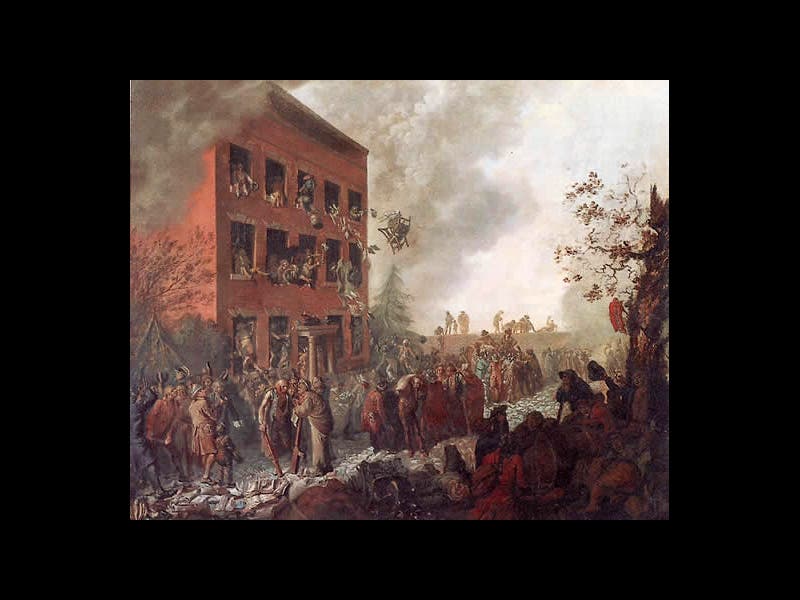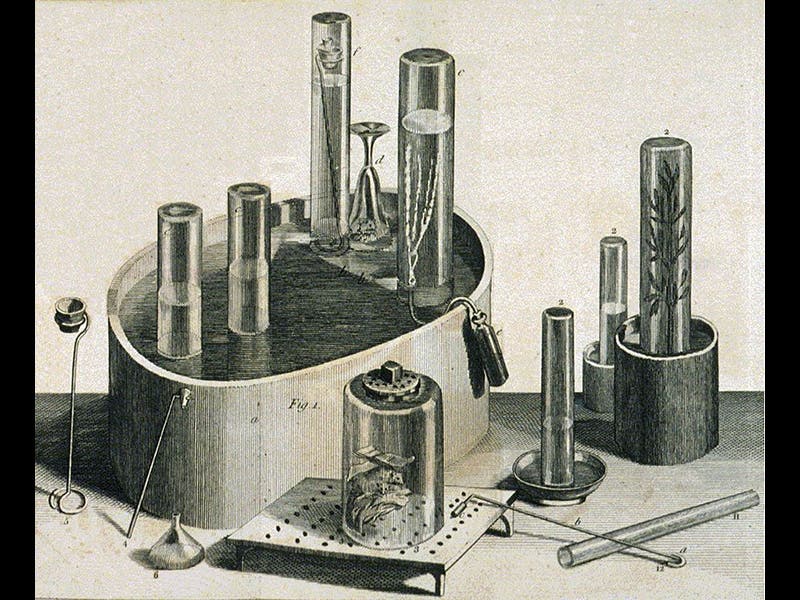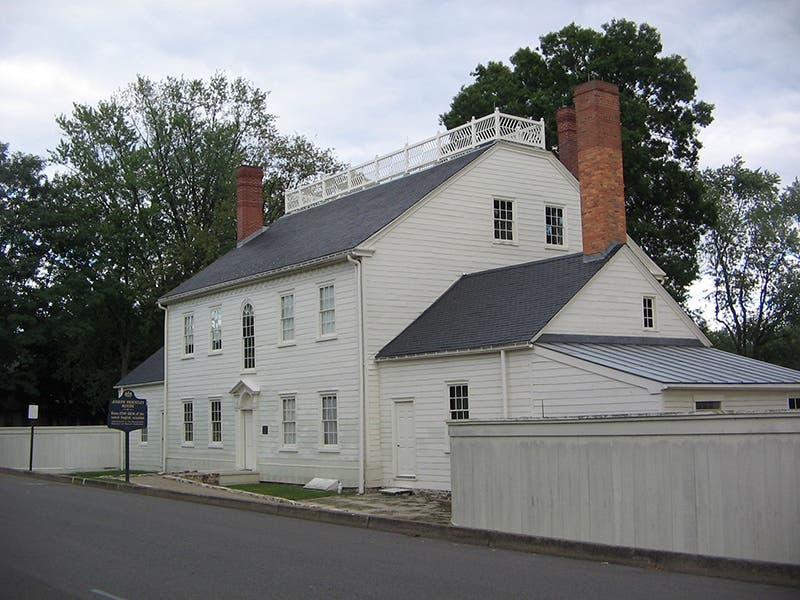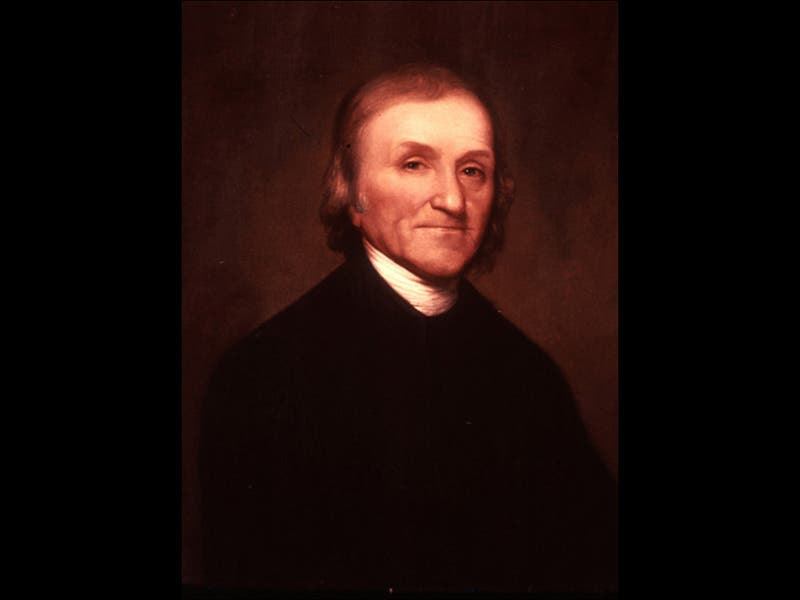Scientist of the Day - Joseph Priestley
On July 14, 1791, Joseph Priestley's home and laboratory in Birmingham, England, was attacked by a mob and destroyed (see first image above). Priestley was one of many English sympathizers with the French Revolution who were the target of government-encouraged hooligans on this second anniversary of Bastille Day. Priestley was one of the most distinguished scientists of the Midlands, having written important books on electricity, optics, and gases (second image), and having co-discovered oxygen in 1774. But his Unitarianism (he was one of the founders of the church in England) and his sympathy with both the American and French revolutions aroused intense opposition that made living in England impossible. So, after the Birmingham riots, Priestley moved first to London, and then, in 1794, to Pennsylvania in the United States, where he resided until his death in 1804; his home in Northumberland is still standing (third image). Priestley spent most of his last years attempting to defend the outmoded phlogiston theory, which had been replaced for most scientists by the new chemistry of Lavoisier. As Georges Cuvier said in a eulogy, "He was a father of modern chemistry who refused to acknowledge his daughter." There is a splendid portrait of Priestley by Rembrandt Peale in the American Philosophical Society in Philadelphia (fourth image).
Dr. William B. Ashworth, Jr., Consultant for the History of Science, Linda Hall Library and Associate Professor, Department of History, University of Missouri-Kansas City. Comments or corrections are welcome; please direct to ashworthw@umkc.edu.










